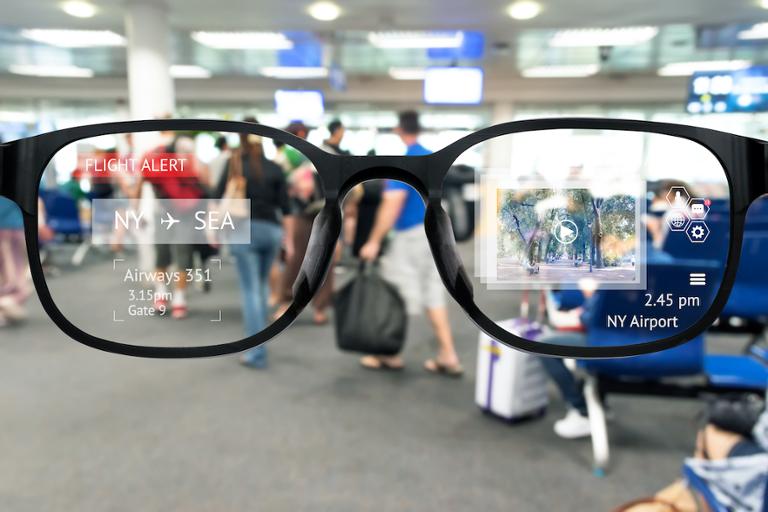
Eight years ago, Google launched a bold experiment: It wanted millions of people to pay $1,500 to slip on a pair of augmented reality (AR) eyeglasses. Via a tiny screen embedded in one of the lenses, “Google Glass” fed the wearer a constant stream of data: texts, location updates (including turn-by-turn directions displayed on a map), and virtual reminders. In theory, the device was supposed to move the world beyond smartphones to “wearables.”
Despite Google’s aggressive push, however, Google Glass failed. Many consumers found the design unattractive. They were already satisfied with their smartphones, and didn’t see the point of spending a not-insignificant sum on yet another device. Google’s marketing and sales apparatus also failed to effectively explain the benefits of Google Glass.
Now the tech industry seems determined to give AR eyeglasses another shot. Meta (formerly Facebook) is essentially betting its existence on virtual reality (VR) and AR experiences; Microsoft is targeting the enterprise with the HoloLens, a pricey AR headset; and Apple has been long-rumored to be hard at work on AR eyeglasses that may pair in some way with the iPhone.
Even Google is reportedly hiring technologists for a new AR project, suggesting that the Google Glass debacle didn’t entirely strip the company’s appetite for the technology. For this latest effort, Google wants technologists who are skilled in the Linux kernel and driver model as well as real-time operating system (RTOS) development.
Will these new projects succeed where Google Glass failed? That depends on a handful of factors. For starters, good design is key: Nobody wants to walk around in public with an ugly bit of hardware on their face. Fortunately, the tech companies seem aware of this problem; for example, Meta’s new “smart” Ray-Bans hint at a future in which AR glasses are nice and sleek. Apple is also no slouch in the “cool design” department. But hardware constraints (such as including an onboard battery of sufficient size for a few hours’ use) may impact form-factors more than any self-respecting designer would like, at least for the first few years.
But just as important as good design is the need for a sizable third-party ecosystem of cool AR apps that people actually want to use. One key reason why Google Glass failed is that, unlike smartphones, there was no “must have” app that only worked in conjunction with a set of AR glasses. Good apps transform hardware from merely interesting to absolutely essential.
Unfortunately, it’s also a bit of a chicken-and-egg situation. Developers won’t jump into the AR market until they know their efforts will be rewarded. According to Emsi Burning Glass, which collects and analyzes millions of job postings from across the country, only 8,796 jobs needing AR skills popped up over the past year (although it predicts that AR-related jobs will grow 64.4 percent over the next two years). Companies such as Meta and Apple will need to convince developers—lots of developers—that building cool stuff for this market is worth it.
As these companies begin to roll out AR eyeglasses over the next few years, pay close attention to the size and viability of the developer ecosystem. That will give you a good idea of whether the tech industry’s budding obsession with AR is warranted—as well as whether you should commit your own time and resources to building AR apps and services.


